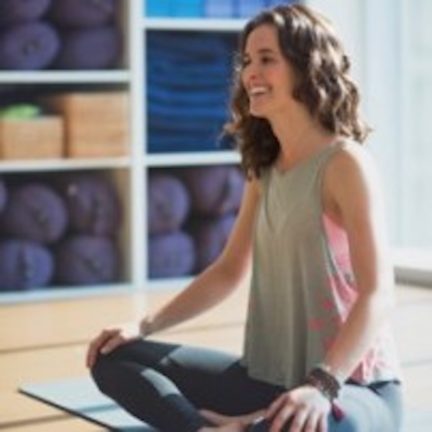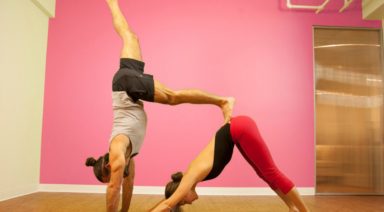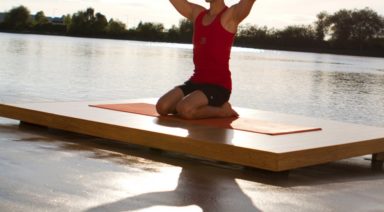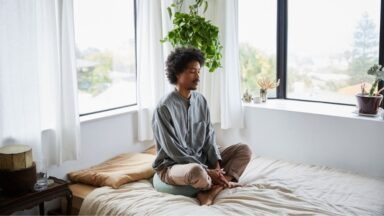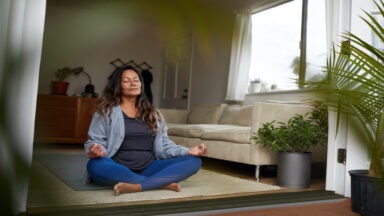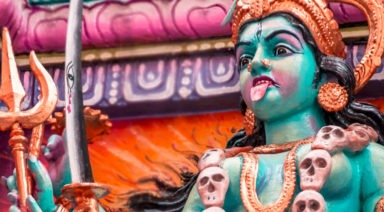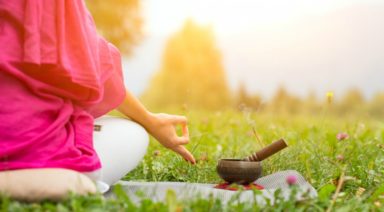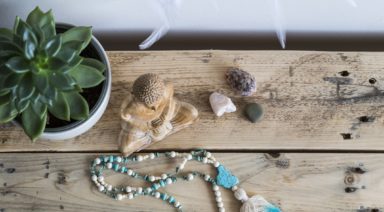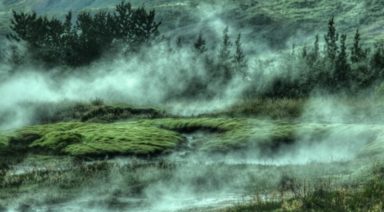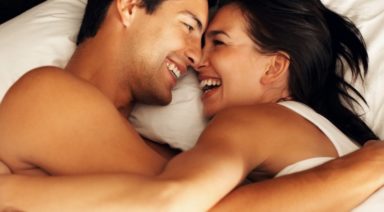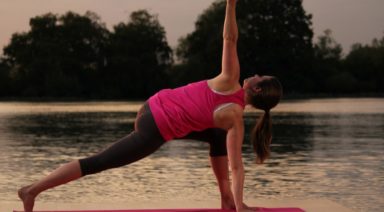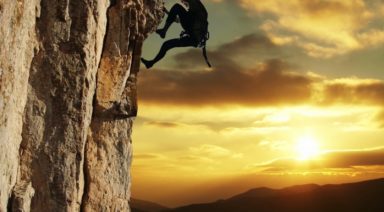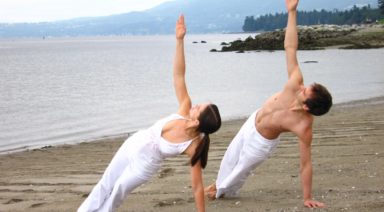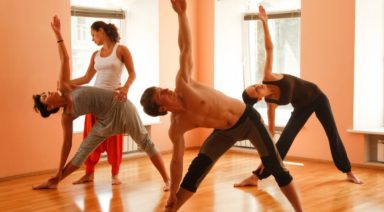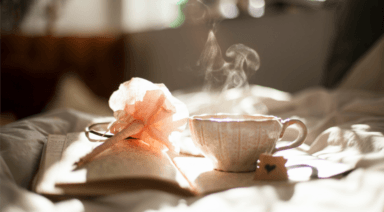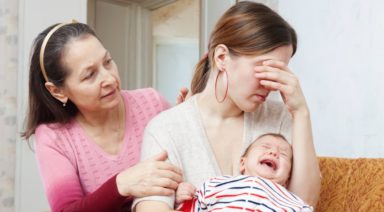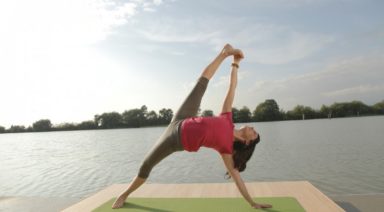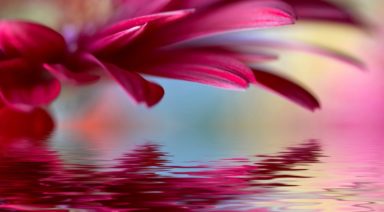Yoga Mala
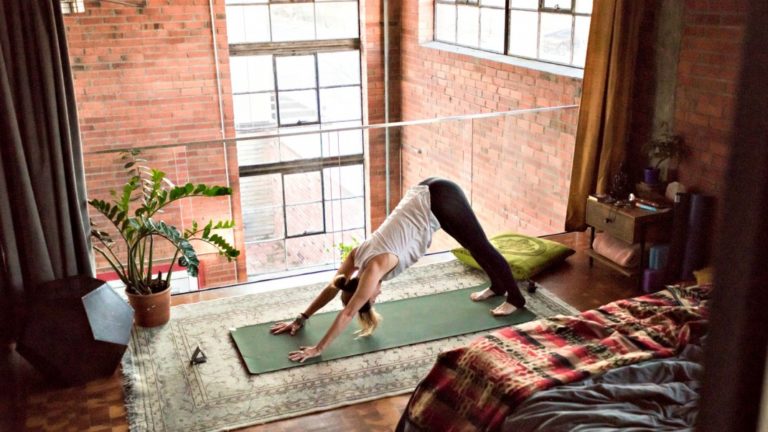
A mala, meaning garland in Sanskrit, evokes a circular, continuous form. In practice, a mala is the devoted offering of repeated cycles (typically in divisors of 108) of mantra Japa or yoga asana. Within a mala, there is always a sense of beginning, continuing, and completion. Both inside each individual cycle and in the practice as a whole. This three-form (trimurti) quality allows us to embody, in practice, the rhythmic cycles ever-present in the natural universe: creation (srishti), sustaining (sthiti) and destruction (samhara).
During a yoga mala, the types of offerings include mantra japa, pranam and yoga.
Offering: Mantra Japa
Chanting mantra, either internally or aloud, has a vibrational impact on the body and mind. A mantra, meaning a tool or skill of thought, imbues the practice of yoga with a primordial rhythm and when offered continuously (japa), mantras are designed to liberate consciousness.
“Mantras are the sounds that should accompany our yoga postures. Like strands of DNA, these sounds offer yoga practitioners a direct link to the source and substance of the yoga tradition. Just as you cannot truly grasp science without knowing its language—mathematics— it is impossible to touch upon the depth of yoga without knowledge of mantras.” ::Russill Paul, The Yoga of Sound
When preparing to practice mantra Japa, select a mantra that resonates with what you want to cultivate through your offering. Included below are several mantras that serve different purposes in practice. They are short, potent and readily learned through repetition. While an English mantra may be just as powerful, the Sanksrit mantras are intelligently crafted to awaken your whole being with vibration, not just the mind.
| MANTRA | MEANING | INTENTION |
|---|---|---|
| oṁ namaḥ shivāya | I bow to the inner Self who is one with the source of all creation | union |
| oṁ hrim hamsa soham svaha | I bow to the supreme light, to emerge from darkness | purification |
| oṁ maṇi padme hūṃ | May the jewel in the lotus shine forth the light and love of compassion to unite all as one. | compassion |
| oṃ guṃ gaṇapataye namaha | I bow to Ganapati the benevolent remover of obstacles. | overcoming obstacles |
| lokāh samastāh sukhino bhavantu | May all beings everywhere be happy and free. | metta, lovingkindness |
Offering: Pranam
For a gentle, yet transformative practice, you may choose to offer pranams (prostrations) in lieu of the traditional namaskaras (salutations) outlined below. The practice of prostration or kneeling is common to many spiritual traditions and the physical gesture of bowing is understood universally as conveying respect, honor, and reverence.
A pranam is the simple surrender of the whole body to the earth in a prone position.
Begin standing, then lower the hands to the ground and slowly walk them away from the feet to place the belly on the floor. Rest the forehead on the hands like a pillow and stay here for at least one cycle of breath. To complete the pranam, in your own way, press the body up off the floor and return to standing. Use the breath to initiate each movement and move slowly. With relatively uncomplicated form, a mala of pranams may be completed with the eyes closed to facilitate deeper focus and meditation.
Offering: Yoga
A yoga mala can be completed using any combination of practices that totals 108, or for a shortened practice, 27, 54, etc. My favorite way to practice a yoga mala is by completing 12 total cycles, each consisting of 7 surya namaskar A and 2 surya namaskar B, 12 x 9 = 108. Typically, postures for traditional sequences.
Modifications
In this style of yoga mala, there are potentially more than 200 forward bends and more than 150 “push-ups”; For even the most seasoned yoga practitioner, this is a lot to ask of the body. Listed below are common modifications to the traditional form to encourage a sustainable practice that leaves you feeling nourished, not depleted. You may decide to modify every round or alternate between full and modified expressions as is appropriate.
Upper Body
- Bend the elbows for any postures where the arms are extended overhead. This is a great option for anyone with shoulder sensitivity or as the arms begin to fatigue. This can also alleviate dizziness and is recommended for anyone with hypertension
- Skip the basic vinyasa (chaturanga and upward facing dog) and step straight back to downward facing dog from forward bending. Enjoy a few extra moments to catch your breath in downward dog or rest in child’s pose instead
- Substitute cobra or locust pose for upward dog. These postures extend the spine in the same way with little to no weight bearing on the hands
- Substitute forearm plank and dolphin for plank and downward dog for sensitive wrists. When taking this modification, it is recommended to transition slowly from hands to forearms with the knees lowered
- Substitute puppy pose or child’s pose for downward dog, placing less weight on the hands
Lower Body
- Bend the knees in forward bends. This is recommended for all practitioners, even those with an advanced forward bending practice who can very easily touch the ground with straight legs. A gentle bend in the knees will help recruit the larger muscles of the legs for support, especially when the body becomes fatigued, instead of defaulting to the knees and lower back. Similarly, maintain a gentle bend in the knees as you transition from forward bending to standing
- Substitute high or low lunge for warrior one. Lowering the back heel in this split-leg posture requires significant mobility in the hips and legs, enjoy these lunge modifications for several rounds in the beginning until the body is sufficiently warm or as alternatives to warrior one when the legs become tired
Transitions
- With a fluid and repetitive rhythm, it can be easy to hurry from one pose to the next. A mala can be practiced with one breath per movement, but enjoy additional breaths as needed and do not rush through the process. It is far better to complete 54 rounds safely and with self-compassion than to suffer through 108 for the sake of the numerical metric
Your Practice is Personal
The practice of a yoga mala can be deeply cleansing and invigorating, especially when completed during a seasonal shift such as a solstice or equinox. This practice is also welcomed during any time of personal transition or universal celebration. The new year, for instance, is a potent time of creation as we chart a path for the year to come. Through the dedication of a yoga mala, we can dissolve what has passed and galvanize our intentions for the year ahead.
A Moving Meditation
A yoga mala is the ultimate moving meditation with a repetitive, steady rhythm that helps transcend the purely physical form and move us closer to the unified Self. One body, one mind, one breath. Each forward bend serves as a pranam to the source and each vibrant backbend is an emergence of radiant light. The body is the mala, the breath is the mantra.
My dear friend and yoga teacher once told me that praying is when you ask the big questions whereas meditation is when you listen for the big answers. A yoga mala offers us practice for sweating our prayers in movement so that we might listen for what arises in meditation.
What is the Significance of 108?
The number 108 has a range of significance across many different cultures and disciplines. For example, this number informs the architecture of sacred texts that are central to yoga and eastern philosophy. As a devoted scholar of yoga and tantra, my teacher Shiva Rea explains in Tending the Heart Fire, “there are 108 chapters of the Rig Veda, 108 Upanishads, and 108 primary Tantras.” And these texts are written in Sanskrit, a language comprising 54 letters, each with a masculine (Shiva) and feminine (Shakti) form, 54 x 2 = 108. Additionally, listed below are just a few of the many relationships that carry this number.
- In in the field of Ayurveda, there are 108 sacred places, or marmas, in the body, identifying intersections of matter and consciousness. When manipulated, these points can awaken and align the vital energy
- Members of the Vedic tradition see this number as denoting the wholeness of the universe: one represents the solar masculine, zero represents the lunar feminine and eight represents the infinite nature of all things
- In the classic japa mala, used in Buddhism and Hinduism, there are 108 beads used for prayer and mantra
- Mathematicians favor the number 108 for its countless patterns and potential divisions. For example, it is divisible by the sum of its parts and most of its proper divisors, making it a semiperfect number
- Through the lens of astronomy, the diameter of the sun is approximately 108 times that of earth and the distance from our planet to its solar star is, on average, 108 times the diameter of the sun. A similar parallel relationship also exists between the earth and the moon
The unequivocal nature of numbers, unlike language, is absolute. However, it is the way in which we relate to and extract meaning from numbers that brings them to life. Be it randomized coincidence or divine order, there is something undeniably special about one hundred and eight.
How to Keep Count
A mala uses repetition to break free from the fluctuations of the mind, so it may seem counterintuitive to introduce any method of keeping count, which can be a predominantly mental exercise. When offering japa mantra, this conundrum is easily solved using of a string of beads or stones. With the completion of each cycle mantra, the beads are delicately transferred through the fingers of the right hand, beginning and ending with the large bindu, or guru bead, for a total of 108 rounds. In a yoga practice, this task compels a little more creativity, but it need not be complex. You might use small pieces of paper, beans or seeds, or even the chakras of the body to count internally.
To practice a mala with the traditional sequences outlined above, you will simply need three different styles of counters and four small containers or piles. When I offer personal practice, I use three different colored beads and four small clay cups. The first cup has seven clear beads, each representing one surya namaskar A and two wooden beads, each representing one surya namaskar B. The second and fourth cups are empty and the third cup has 12 rudraksha beads, each representing a complete round.
When completing a single round, the seven clear beads and two wooden beads are transferred from the first cup to the second cup at the end of each surya namaskar A and B respectively. When the transfer is complete, a single rudraksha bead is transferred from the third cup to the fourth cup. In the next round, seven clear and two wooden beads are returned from the second cup to the first cup, and another rudraksha bead is transferred from the third to the fourth cup. The clear and wooden beads are continuously transferred between the first and second cups until all rudraksha beads are in the fourth cup. It may seem complicated, but give it a shot, it’s easier than you think.
Remember, the completed number of mantras or asanas is not what matters most. You may choose to let go of the numbers altogether and simply practice until your heart feels complete.
Kemetic Yoga: Resurrection of an African Legacy

The geometric positions and postures seen in the hieroglyphs and temple walls of ancient Egypt are some of the earliest manifestations of yoga. Discover how practicing Kemetic yoga poses can profoundly affect your health, wellbeing and consciousness.
As a boy growing up in the public housing projects on the Southside of Chicago, I was always fascinated by ancient stories of mythology, fantasy and warriors. I watched many programs about the wonders of the ancient world on public television. The most fascinating aspect of the ancient world for me had always been the mysteries of Egypt. From the first time I’d seen the pyramids and the Sphinx in documentaries, movies and in books I wanted to travel there and see them in person.
The Great Black Kings of Africa
At Catholic grade school in the 1960s, my one and only Black male teacher, Mr. Rochelle, introduced his class to books by the Black historians, including J.A. Rogers, who wrote Great Black Men of Color. This book spoke of the Great Black Kings of Africa and their accomplishments. It also revealed to us that Egypt is in Africa, is the origin of western civilization and that the Pharaohs of ancient Egypt were actually Black.
This information became even more interesting to me when I saw that in my grade school geography book that the country of Egypt (northeastern Africa) was absent from the map of Africa. The space where Egypt is supposed to be was blank.
The country of Egypt was instead placed in a separate circle in the upper corner of the page with the words “middle east” written under it.
What I learned in later years is that there has been a concerted effort on the part of western academia to take Egypt out of the context of Africa and to place it in the European/Middle Eastern area of civilization.
Mount Meru: The Origin of Humanity
DNA studies show conclusively that the original modern human beings emerged out of Africa over 3.5 million years ago. The people of India, who were originally an all-Black people called Dravidians, had DNA that originated in Ethiopia. Ethiopia is part of the African region called “Kush” that included ancient Egypt, Sudan and Ethiopia, all of which comprises a large chunk of Africa. In the book “Opening to Spirit”, author and Yoga master, Shola Arewa draws the connection between ancient Indian stories of the origin of humans on Mount Meru, with East Africa, where the actual mountain of Meru stands at over 15,000 feet in the shadow of Mount Kilimanjaro.
Hatha and HetHeru There are many similarities between words in Sanskrit and the ancient Egyptian language as it relates to Yoga. For example, the word Hatha which designates the general system of Yoga and means “Moon” and “Sun”, similar to the ancient Egyptian word “Hathor”, which was originally pronounced “Het Heru” by the ancient Egyptians. Hathor or Het Heru is the goddess of the moon and sun.
In ancient Egypt she was personified by a cow. Interestingly the cow is held sacred in Indian culture and is never killed. The Indian cow goddess Kamadhenu, like HetHeru, represents the sacred mother and fertility.
At the age of 21, I made a conscious decision to completely leave the bad habits I had acquired growing up in the ghettoes of Chicago behind me. I stopped all drinking, smoking and the use of psychedelic drugs. As a child of the 60s I had learned to use drugs like marijuana and acid as a means of creating a transcendent consciousness. I also realized that even though these substances could be used to explore the mind that they often had negative impact on my health and wellbeing. Therefore, I decided that I would take up a vegan diet and use fasting, meditation and exercise (running and calisthenics) as my new path towards higher consciousness.
My Yogic Journey
About a year after embarking on this new path, I met someone who was into Yoga. After a great deal of hesitancy, I allowed myself to try out a Yoga class. After the first class with my one and only teacher, Dr. Asar Hapi of Chicago, a Black man, Naprapath and Chiropractor, I knew that I would make Yoga my life long path.
Though I was very stiff at the beginning, I could feel the benefits; I felt relaxed and my energy improved. I learned that physical benefits of Yoga, such as flexibility, came as a consequence of practice. My teacher, Dr. Hapi, had already adopted an ancient Egyptian name. We both felt that Yoga probably came from Egypt but we did not have any particular proof.
Revelations From King Tut’s Tomb
This changed when the King Tut exhibit came to Chicago in the mid-1970s. One of the artifacts that were found in the tomb of King Tut was a chair that contained a uniquely ancient Egyptian Yoga posture and various hieroglyphic inscriptions.
We were inspired to figure out how to perform this posture, translate the hieroglyphic writing and interpret the symbols. Our investigation of the artifact revealed the following:
- The Sun Disk at the top of the head represents the crown chakra
- The two serpents on each side of the sun disk represents the two primary nadis (energy channels) Ida and Pingala
- The hieroglyphic inscriptions make reference to eternity and the achievement of immortality
- The “person” or deity pictured in posture is called Heh or Shu and is associated with life energy, the breath and the life force found in the air (prana)
- He is seated on a platform that means “Nub” which is the ancient Egyptian word for gold. Gold is a metaphor for the highest level of consciousness that a person can reach which is the ultimate purpose of the practice of Yoga
Resurrection of Ancient Egyptian Yoga
As we explored more of the ancient Egyptian records through books it became apparent that Gods and Goddesses they called “Neteru” were actually in various Yoga postures that did not exist in the Indian system. The philosophies of Yoga, Hinduism, Buddhism and Taoism were similar and in some cases identical to ancient Egyptian spiritual science. They are various examples of this:
Maat
The ancient Egyptian philosophical idea that the underlying nature of the universe is predicated on a discernable order that each individual person is obligated to strive for. According to Maat the true nature of everything is order, balance, harmony, justice and reciprocity. This principle of Maat and these attributes need to be exemplified in the way that we live our lives in order to transcend the limitation in consciousness that comes with identification with the temporal world of cause and effect. It is the over identification with the physical body and material world that gives rise to all of the problems that afflict humankind.
A woman sitting on one folded leg with spine twisted and arms extended personifies Maat. The arms have wings attached which signify the ability to heal and for the spirit to take flight or rise metaphorically. Maat wears a feather on her head.
In the ancient Egyptian funeral rites, the heart of the of the deceased person Wwas symbolically weighed: it had to be lighter than the feather in order for the person to achieve immortality.
Hermetic Philosophy
The Greeks called him Hermes but the ancient Egyptians called him Tehuti or Thoth. Thoth was the great spiritual teacher of ancient Egypt who was the inventor of writing, knowledge and wisdom. Hermetic philosophy speaks of methods of achieving immortality through the practice of techniques that allows the mind to disassociate with identification with the material world. This idea of disassociation and transcendence was referenced in all of the earliest Yogic writings from India. This process depended upon the practice of contemplation and meditation rather than the performance of hundreds or even thousands of Yoga postures that characterizes modern Yoga. Thoth delineated 7 primary principles that became the foundation of what was later to be called Hermetic philosophy and gave rise to Free Masonry, Theosophy and many other modern “new age” philosophical movements.
The Seven Principles of Hermetic Philosophy
The seven principles are:
- The Principle of Mentalism: The All if Mind and the Universe is Mental
- The Principle of Correspondence: As above, so below, as below so above
- The Principle of Vibration: Nothing Rests, everything moves, everything vibrates
- The Principle of Polarity: Everything is dual, everything has poles, everything has its pair of opposites, like and unlike are the same, opposites are identical in nature, but are different in degree, extremes meet, all truths are but half-truths, all paradoxes may be reconciled.
- The Principle of Gender: Gender is in everything, everything has its masculine and feminine principles, gender manifests on all planes
- The Principle of Rhythm: Everything flows out and in, everything has its tide, all things rise and fall, the pendulum swing manifests in everything, the measure of the swing to the right is measure of the swing to the left, rhythm compensates
- The Principle of Cause and Effect: Every cause has an effect, every effect has a cause, everything happens according to law and chance is but a name for law not recognized, there are many planes of causation but nothing escapes the law
For those who are familiar with the philosophy of Yoga, the similarities with Maat and what is called Hermetic philosophy are intuitive.
Key Difference
However, there are key differences in the approaches of Yoga as it was understood and practiced in ancient Egypt and India. A fundamental aspect of ancient Egyptian spiritual science (which is identical across Africa) is the connection to ancestors. In ancient Egypt, which is properly called Kemet (Egypt is the Greek version of the word), connecting with the spirits of the ancestors through meditation, prayer and ritual is a pillar of Kemetic Yoga practice. The purpose of meditation is not only to transcend the boundaries of the material world but also to connect and communicate with the living spirits of those who have gone before us.
About two years after I started my practice of Yoga with Dr. Hapi, he informed me that he was going to focus his attention on his healing practice and that I should continue to develop and teach the system of ancient Egyptian Yoga. Though I really only wanted to practice Yoga for my own development, I eventually started to teach it more regularly. I decided to use the term Kemetic Yoga because it is the correct Egyptian term. Over the years I have done more original research into the philosophy and practice of Kemetic Yoga through traveling to Egypt, studying ancient texts, deciphering symbols and introducing new movements and postures into the system.
Kemetic Yoga Poses
We perform many of the movements and posture or asanas that are found in mainstream Hatha Yoga because many are seen in the record of ancient Egypt and are also represented among the practices of traditional African societies. Some of the postures and movements that are uniquely ancient Egyptian are:
- The Pose of Immortality
- The Pose of Auset/Maat
- The Pose of Min/Sekhmet
- The Teken Pose/Teken Sequence
- The Sesh Poses
- The Pose of Anpu (Peaceful Warrior Pose)
- The Maat Ka Sequence
- The Pose of Selkhet
- The Pose of Ausar
- The Pose of Geb
The YogaSkills Method
I have synthesized the practice of Kemetic Yoga into a system called the YogaSkills Method. YSM is based upon two concepts called Rule of Four Breathing (RFB) and Geometric Progression. RFB simply means that each breath should be mindfully divided into four parts: Inhalation, Pause, Exhalation, Pause. This is simply to allow the mind to stay focused and so that energy can move properly through the body. GP or Geometric Progression means that we are moving the body through postures in a manner that is consistent with physical and spiritual anatomy and that allows energy to flow through the channels (nadis).

